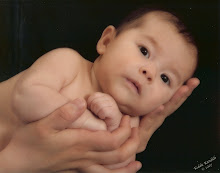Surveys on children with Kawasaki disease in Japan
Mortality among children with Kawasaki disease in Japan
Article Abstract:The risk of dying for boys with Kawasaki disease may be twice as high as that of healthy boys the same age, and higher than that of girls with Kawasaki disease. Kawasaki disease is a disorder that affects mainly infants and toddlers; causes inflammation of the blood and lymphatic vessels throughout the body. Of 4,608 Japanese children with Kawasaki disease who could be followed, 13 died during the 18-month study: 10 boys and three girls. The number of deaths among these children was higher than the expected number for healthy children the same age. The number of boys with Kawasaki disease who died was approximately two times higher than the expected number for age-matched healthy boys, while the number of deaths among girls with Kawasaki disease was approximately the same as for age-matched healthy girls. The number of deaths during the acute phase of the disease, or the first two months after its onset, was much higher than for comparable healthy children. After the acute phase, the number of deaths was approximately equal to the expected number.
author: Nakamura, Yosikazu, Yanagawa, Hiroshi, Kawasaki, Tomisaku
Publisher: Massachusetts Medical SocietyPublication Name: The New England Journal of MedicineSubject: HealthISSN: 0028-4793Year: 1992
Serum concentrations of total bile acids in patients with acute Kawasaki syndrome
Article Abstract:The association between the increase in total bile acid (TBA) levels seen in some children with Kawasaki syndrome (KS) and other measurements of liver function is unclear. The liver produces the bile acids that aid in the digestion of fats. Researchers evaluated the blood levels of TBA, alanine aminotransferase (ALT), total bilirubin (TBil), alkaline phosphatase (ALP), and C-reactive protein (CRP) in 71 children aged 2 months to 8 years in the initial phase of KS. They repeated these blood tests in 29 of these patients during their recovery. Twenty-two percent of the 71 patients had increased TBA levels during the initial phase of KS. TBil and ALT levels were normal in some of these patients with increased TBA levels. There was no association between TBAs and any of the other liver function tests in 10 patients who also had heart complications. TBA levels returned to normal in all but three patients evaluated during the recovery phase.
author: Kato, Hirohisa, Kimura, Akihiko, Inoue, Osamu
Publisher: American Medical AssociationPublication Name: Archives of Pediatrics & Adolescent MedicineSubject: HealthISSN: 1072-4710Year: 1996
Results of 12 nationwide epidemiological incidence surveys of Kawasaki disease in Japan
Article Abstract:The frequency and distribution of Kawasaki disease in Japan indicates that the disease may not be caused by a virus. Researchers reviewed hospital surveys of Kawasaki disease conducted at two-year intervals between 1970 and 1992. The number of patients with the disease rapidly increased from 1970 to 1986 and remained stable at approximately 5,000 per year thereafter. Outbreaks occurred in 1979, 1982, and 1986 during which the rate of sibling cases increased. Males and children younger than one year of age had higher rates of Kawasaki disease and heart complications than other children. The recurrence rate ranged between .3% and 5% and increased slightly following outbreaks. The death rate decreased from 1% in 1974 to .04% in 1992. Corticosteroid treatment decreased significantly from 1975 to 1990 while the use of immune globulins increased sharply from 1982 to 1992.
author: Nakamura, Yosikazu, Yanagawa, Hiroshi, Kawasaki, Tomisaku, Yashiro, Mayumi, Kato, Hirohisa
Publisher: American Medical AssociationPublication Name: Archives of Pediatrics & Adolescent MedicineSubject: HealthISSN: 1072-4710Year: 1995
Saturday, May 2, 2009
Subscribe to:
Post Comments (Atom)




































No comments:
Post a Comment